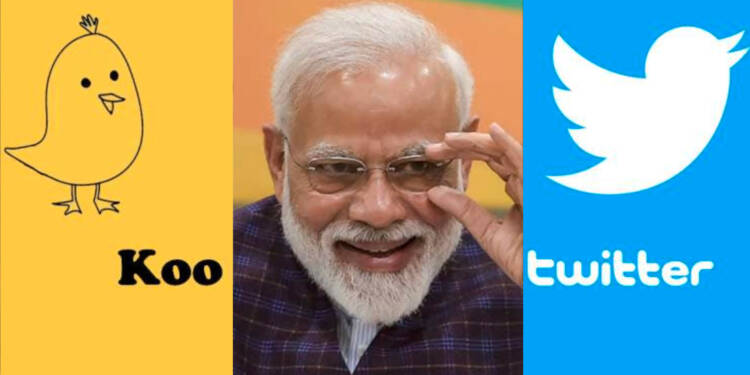Has Government Decided To Block Twitter from India? Top government agencies, department and politicians shifting to Koo App

It is indeed true that India needs a free, fair, non-hyphenated journalism which has the guts, power, intention, and support to stand afront, raise fingers at the government and question its moves. But, right now how can we expect journalism to bring forth the crises of other institutions when it itself is facing multiple crises.
In recent days, as the events unfurl, the fight between Twitter and the Indian government has started heating up with fireballs from each side aimed at destroying the sovereignty of the other. Both made snide remarks against each other in this battle.
To cut the long story short, we have demanded from the Indian government asked Twitter to take action on a clutch of handles. The government has accused these handles of fomenting trouble using the farmers’ agitation. In retaliation to this request the social media company did suspend a few handles at first, but then eventually restored them after some time. It reportedly blocked around 500 handles.
After this restoration of accounts, the Indian government got infuriated and then sent the company three notices urging immediate action. However, looks like the social media platform seemed to ignore them.
The angry and frustrated Indian government couldn’t take this disobedience and hint at legal action against Twitter and its officials in the country. Twitter looked after a meeting with the Ministry of Electronics and IT (MeitY) claiming that the safety of its employees was paramount.
Twitter said in a statement that banning people from expressing their views from his account on the platform would violate his or her fundamental right to freedom of expression guaranteed under Indian law. On February 10, it said that it will continue to maintain dialogue and engage with the Indian government. “We will continue to advocate for the right of free expression on behalf of the people we serve”, the company said.
Ministry of electronic and information technology replied to the tweets by Twitter by putting up a post on Koo that said: “Upon the request of Twitter seeking a meeting with the Govt., the Secretary IT was to engage with senior management of Twitter. In this light a blog post published prior to this engagement is unusual. Govt. will share its response soon.” The same was shared on the Twitter handle of MeitY later on. The simple fact that the ministry replied on Koo is seen as significant.
Koo is an Indian social media platform which is looking forward to replacing Twitter as the government and its supports are extending their support to it. Several ministers and ministries are gradually shifting to the platform and are also being encouraged to use it. Many of them have already migrated to Koo.
One stark difference is that the character limit for a ‘Koo’ is 400 in comparison to Twitter’s limit of 280.
Koo is available for download on both the Google Play Store and Apple App Store and till Tuesday the new platform has had over a million downloads.
Can India afford to bite the bullet and throw Twitter out of the country?
The question that whether Koo gets the consistent backing of the general public like Twitter or not remains unanswered. The interface of Koo is a pale imitation of Twitter itself sharing an uncanny resemblance. The platform has received good funding from the right-wingers.
This substitute effect by the government has also triggered controversies as to whether Twitter will be banned in India, which would be a huge call after which it might face international rebuke and dissents. The Indian economy might not be in a position to take this at the moment.
But if the skirmish continues, a lot of countries might raise eyebrows over the Indian government on the grounds of national security. The world has also been doing the same thing with China in the case of a plethora of Chinese apps.
What is the political side of this strategy?
It is of no doubt that today the Government and Twitter are playing “Chor- Police” with online freedom of speech. But well, just like the actual chor police in our country, this catch and run are also selective. Oh, of course.
On one side is the Indian government which is acting as a censor to the content posted on the social media platform and on the other side we have Twitter censoring governments just like it did with Trump. And you might be thinking who is winning in this faceoff- the government or the application? Well, neither as of now. The potential real winner is emerging out to be a homegrown app that has the potential to replace twitter named as Koo. The first thought that comes to your mind is but what’s wrong in it? You might as well think that the people in the business world is always in search for an exploitative opportunity to establish their presence and leave behind others in the market and this seems to be just another instance. Well, well, well, this if you think that way you are too gullible and innocent to think about politics. Koo is just an application, it sure is, but right now with its sudden political popularity, coincidental timing, and uncanny resemblance to Twitter, it looks more like one of the government’s another strong-arm tactic to gag protesters, chiders, and critics.
Just to throw some light on what pathway India is leading in being a so-called democracy, I would like to state that Twitter is already banned in China, North Korea, Turkmenistan, and Iran; countries which are very well known for their democratic methods and practices, it is no coincidence, is it?




